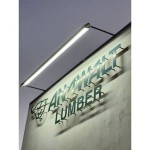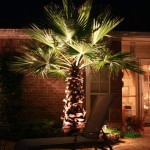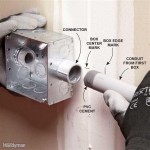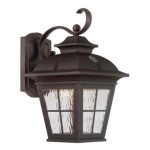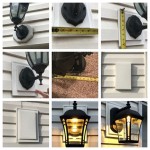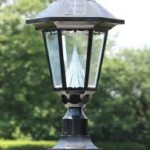Multi-Luminaire Outdoor Lighting
Multi-luminaire outdoor lighting systems utilize multiple light fixtures working in concert to illuminate a space. This approach offers significant advantages over single-fixture installations, providing enhanced control, improved uniformity, and greater design flexibility for a variety of outdoor applications.
One of the primary benefits of multi-luminaire systems is improved light distribution. By strategically positioning multiple fixtures, designers can achieve more even illumination, minimizing dark spots and harsh shadows. This is particularly important in large areas like parking lots, parks, and roadways where consistent lighting is crucial for safety and visibility.
Another key advantage is the ability to tailor light levels to specific needs. Different areas within a single space often require varying degrees of illumination. Multi-luminaire systems allow for customized lighting zones, providing brighter light where needed for security or task performance, and lower levels in other areas to conserve energy and minimize light pollution.
Multi-luminaire installations offer greater flexibility in design and aesthetics. Designers can choose from a wider range of fixture styles and sizes to complement the surrounding architecture and landscape. The use of multiple smaller fixtures can create a more subtle and integrated lighting scheme compared to relying on a few large, high-powered units.
Energy efficiency is another important consideration. Multi-luminaire systems, when designed and controlled effectively, can contribute to significant energy savings. By using multiple lower-wattage fixtures and incorporating features like dimming and occupancy sensors, it’s possible to reduce overall energy consumption while maintaining desired light levels.
The use of multiple fixtures can also enhance safety and security. Well-placed lighting eliminates dark areas where potential hazards or security risks might lurk. The increased visibility provided by a multi-luminaire system can deter crime and improve pedestrian and vehicular safety.
Several different types of fixtures are commonly used in multi-luminaire outdoor lighting systems. Floodlights are ideal for illuminating large areas, while spotlights can be used to highlight specific features or architectural elements. Bollard lights provide low-level pathway illumination, and wall-mounted fixtures can enhance building facades and entrances.
The design process for a multi-luminaire system involves careful consideration of several factors. These include the intended use of the space, the desired light levels, the surrounding environment, and the aesthetic goals of the project. Lighting designers use specialized software and calculations to determine the optimal placement, type, and number of fixtures needed to achieve the desired results.
Proper placement of fixtures is critical for optimizing performance and minimizing light pollution. Fixtures should be positioned to avoid glare and light trespass onto neighboring properties. Shielding and aiming techniques are employed to direct light where it is needed and minimize unwanted spillover.
Advancements in lighting technology have significantly expanded the capabilities of multi-luminaire systems. LED technology offers superior energy efficiency and longer lifespans compared to traditional lighting sources. Smart lighting controls, including dimming, scheduling, and occupancy sensors, provide further opportunities for energy savings and enhanced functionality.
Integration with building management systems (BMS) allows for centralized control and monitoring of outdoor lighting. This enables facility managers to optimize lighting performance, track energy usage, and proactively address maintenance needs.
The choice of lighting controls plays a crucial role in the effectiveness and efficiency of a multi-luminaire system. Dimming controls allow for adjustment of light levels based on time of day or occupancy. Occupancy sensors activate lights only when needed, further reducing energy consumption.
The maintenance requirements for multi-luminaire systems are relatively straightforward. Regular cleaning of fixtures and replacement of lamps or LED modules as needed are essential for maintaining optimal performance and extending the lifespan of the system. Remote monitoring and diagnostics can simplify maintenance tasks and reduce downtime.
The initial investment in a multi-luminaire system may be higher than a single-fixture installation. However, the long-term benefits, including reduced energy costs, improved safety and security, and enhanced aesthetics, often outweigh the upfront expenses.
The versatility of multi-luminaire outdoor lighting makes it suitable for a wide range of applications. From commercial properties and public spaces to residential landscapes and architectural lighting, the ability to customize and control illumination levels makes it a valuable tool for enhancing functionality and aesthetics.
Choosing the right fixtures, controls, and design approach is essential for maximizing the benefits of a multi-luminaire system. Consulting with a qualified lighting designer can ensure that the system meets the specific needs of the project and delivers optimal performance.

Murale Extérieure Summerside Dominion Ventures Multi Luminaire Outdoor Sconces Sconce Lighting

Multi Luminaire Outdoor Sconces Wall Sconce Black Lights

Murale Extérieure Lauian Dominion Ventures Multi Luminaire Outdoor Wall Lighting Sconces Walls

Innova B Aur6081b Multi Functional Luminaire Garden Light The Main Material China Public Street Urban Lighting Made In Com

Indoor And Outdoor Lights Lighting Multi

Multi 30 Pc

Top Ip65 High Bright Multi Lighting Outdoor Wall Lamp Garden Led Post Lights China Beautuful Light Solar Pathway Made In Com

The 3 Best Smart Outdoor Lights For Backyards Of 2024 Reviews By Wirecutter

Murale Extérieure Portland Zlite Noir Multi Luminaire

Innova B Aur6081b Multi Functional Luminaire Garden Light The Main Material China Public Street Urban Lighting Made In Com
